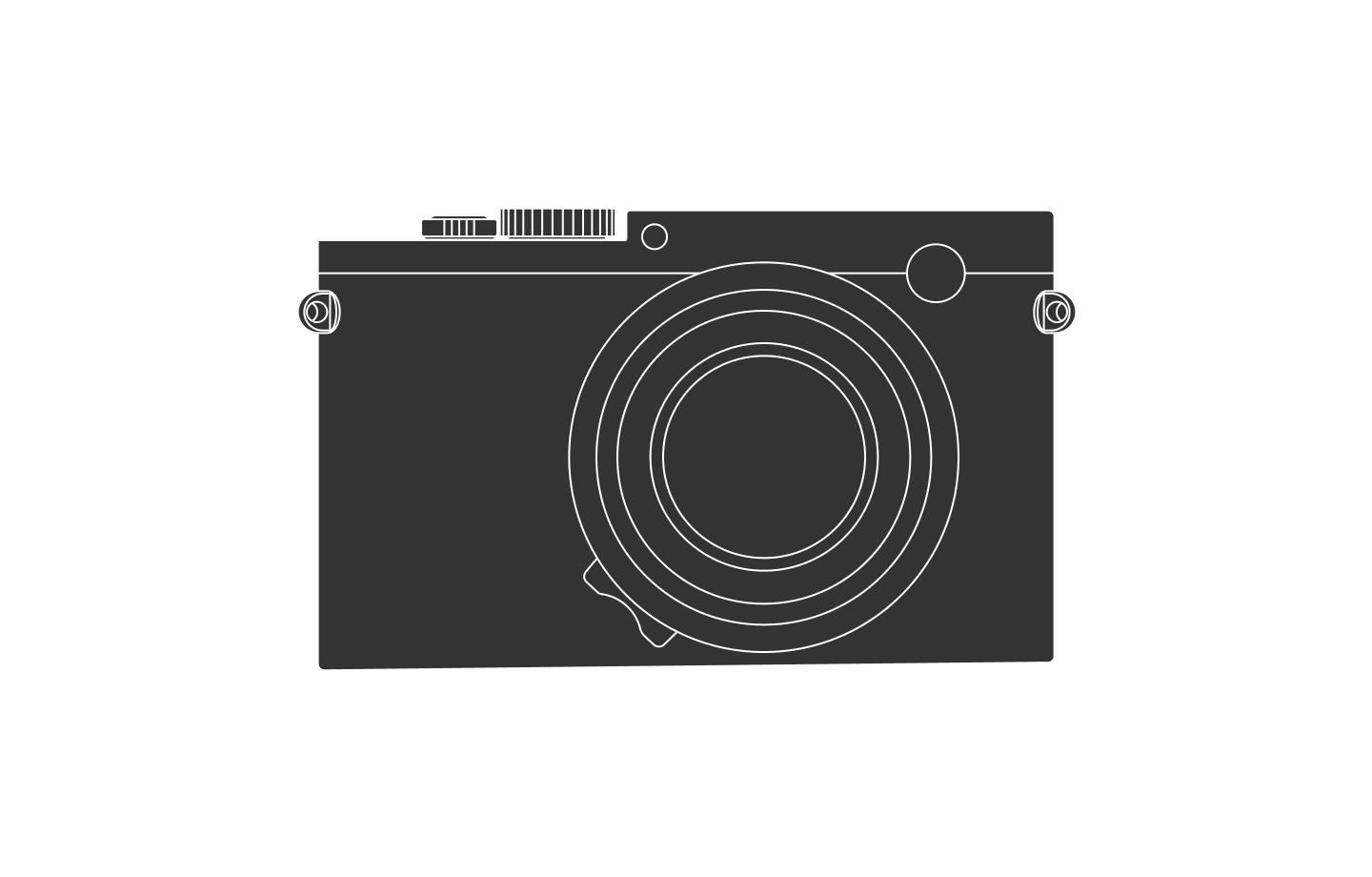
Japan · fertility festival
6 min read Oct 17, 2019
Content warning
This post contains depictions of human genitalia
This post is the last in a series of four about our latest trip to Japan. It’s about the annual fertility festival in Japan called Hōnensai (豊年祭) or Hōnen Matsuri.
While we were planning this trip, my wife and I noticed that it happened to coincide with Honen Matsuri. I had celebrated new years in Tokyo some time back, but neither of us had participated in a traditional Japanese festival. We decided to plan our whole trip around it.
The festival occurs every March 15th in Komaki, a small town about one hour north of Nagoya.
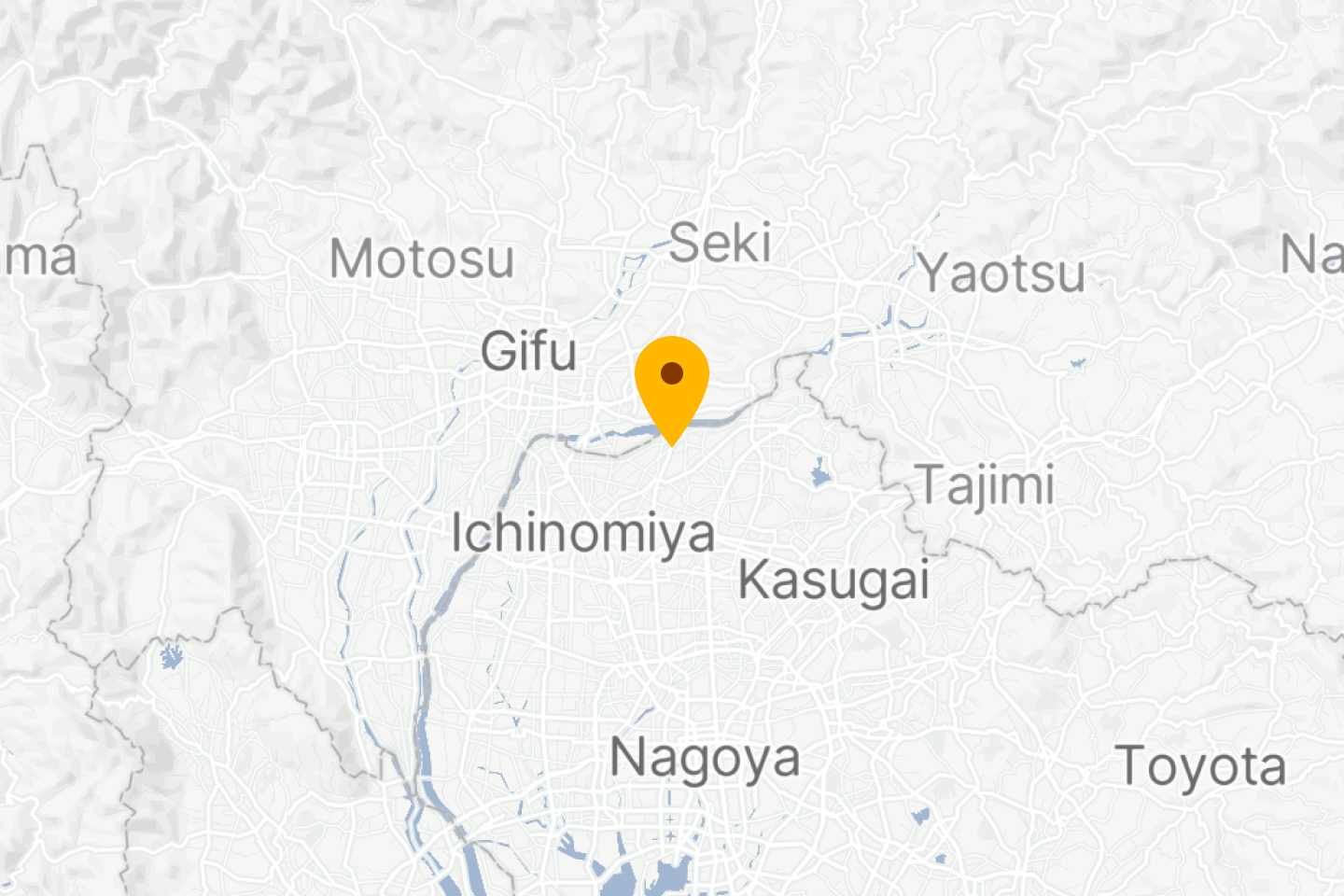
It’s centered around the Tagata Shrine. Upon stepping foot on the shrine grounds, it became apparent to us that it’s not an ordinary shrine. There are phallic representations everywhere. Even the Suzu bell takes a phallic shape.
 Leica Q · f/7.1 · 1/60 · ISO
400
Leica Q · f/7.1 · 1/60 · ISO
400
As I describe this festival, depending on your background, it may seem bizarre. Keep in mind that cultural context is critical. This festival is a family-friendly event that attracts people of all ages and genders.
 Leica Q · f/16 · 1/60 · ISO
100
Leica Q · f/16 · 1/60 · ISO
100
That family-friendly atmosphere starts with the street vendors on the festival grounds. Many sell typical Japanese street fare like yakisoba (stir-fried noodles), okonomiyaki (savory pancake), and ikayaki (grilled squid). The interesting ones sell candies, chocolate-covered bananas, imagawayaki, and souvenir trinkets all shaped like both female and male genitalia.
 Leica Q · f/16 · 1/125 · ISO
100
Leica Q · f/16 · 1/125 · ISO
100
I loved seeing people of all ages walking around and eating penis-shaped treats. It really put to rest any chance of the festival being interpreted as sexual in nature.
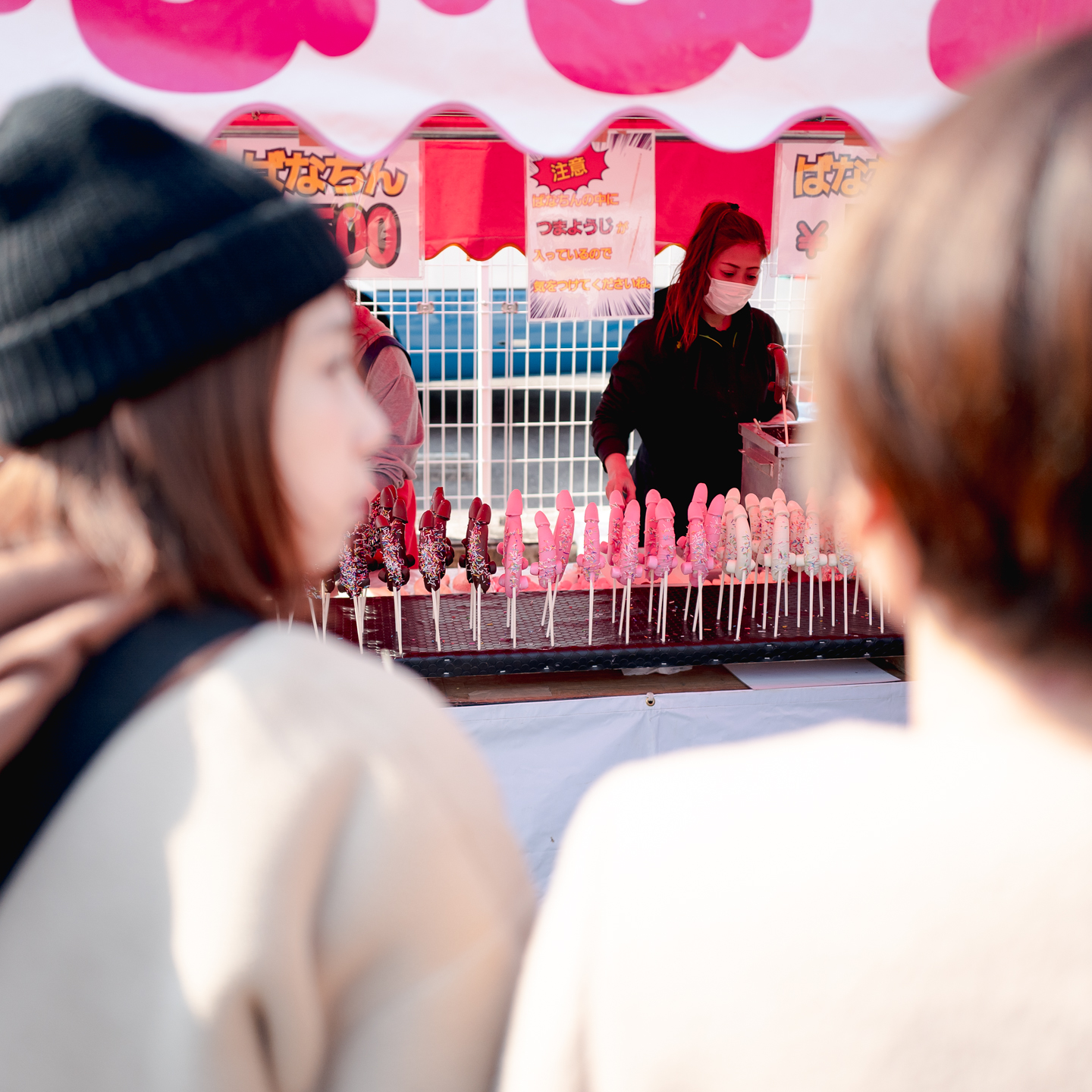 Leica Q · f/1.7 · 1/3200 · ISO
100
Leica Q · f/1.7 · 1/3200 · ISO
100
 Leica Q · f/7.1 · 1/800 · ISO
100
Leica Q · f/7.1 · 1/800 · ISO
100
 Leica Q · f/16 · 1/125 · ISO
100
Leica Q · f/16 · 1/125 · ISO
100
Some festival-goers even dressed up in costumes and proudly posed for photos and selfies.
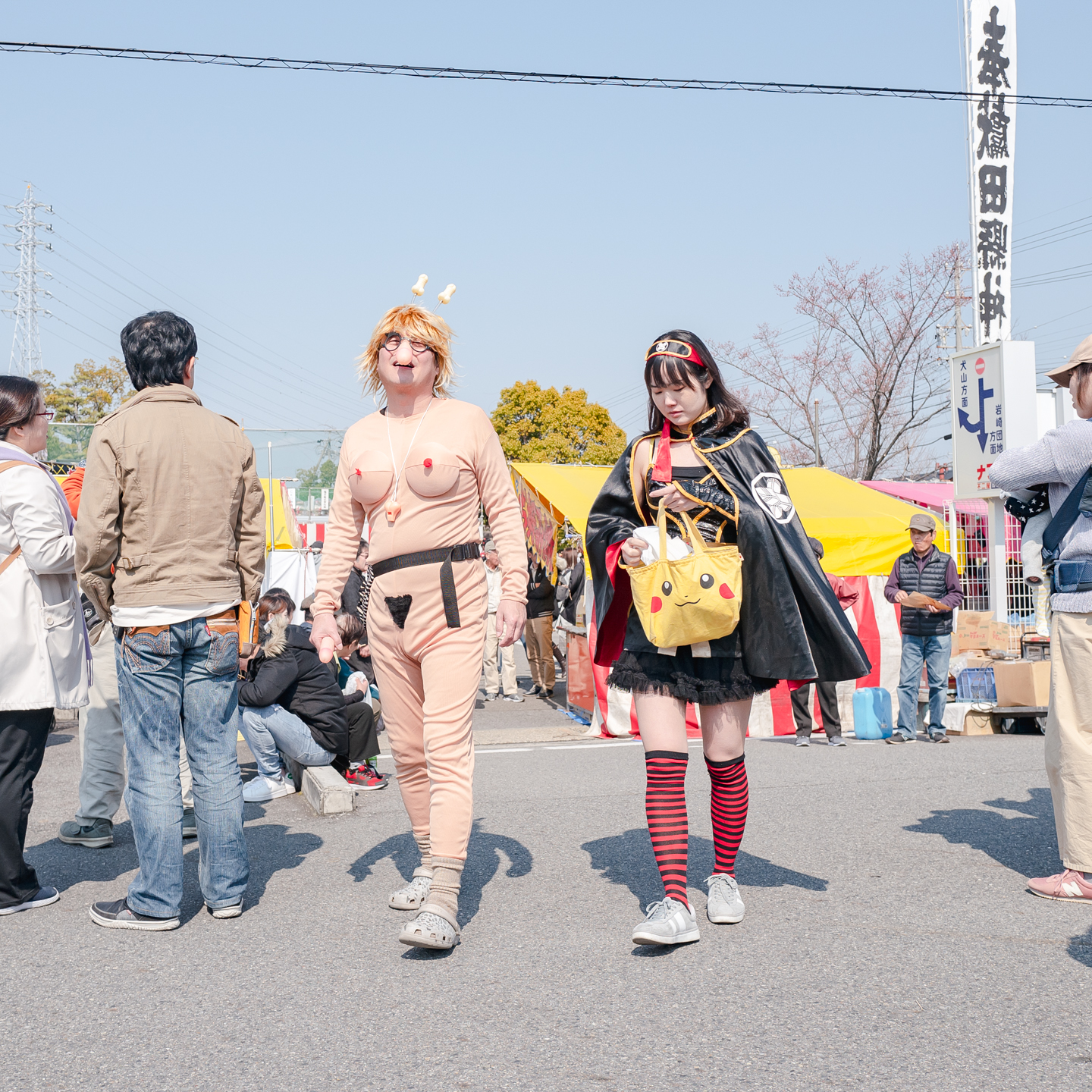 Leica Q · f/5 · 1/2000 · ISO
100
Leica Q · f/5 · 1/2000 · ISO
100
The grocery store next door to the shrine closes off their parking lot every year. The staff roll-out carts of milk crates and transform the lot into a makeshift picnic area.
 Leica Q · f/7.1 · 1/640 · ISO
100
Leica Q · f/7.1 · 1/640 · ISO
100
 Leica Q · f/3.5 · 1/2500 · ISO
100
Leica Q · f/3.5 · 1/2500 · ISO
100
At 10am in the morning, the procession begins in the Tagata Shrine. Volunteers hand out free sake and dried konbu (edible kelp) to everyone along the parade route.
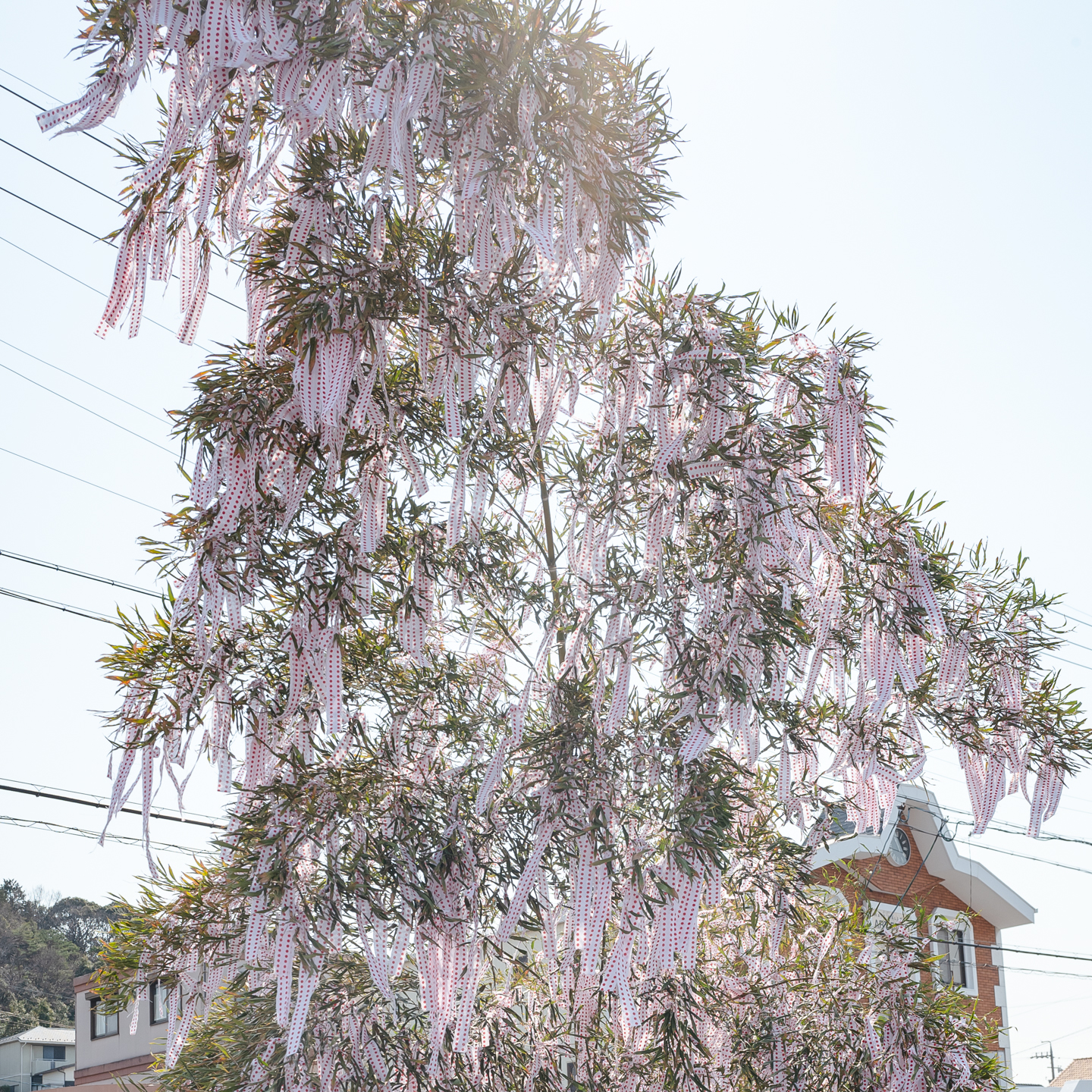 Leica Q · f/7.1 · 1/640 · ISO
100
Leica Q · f/7.1 · 1/640 · ISO
100
 Leica Q · f/7.1 · 1/250 · ISO
100
Leica Q · f/7.1 · 1/250 · ISO
100
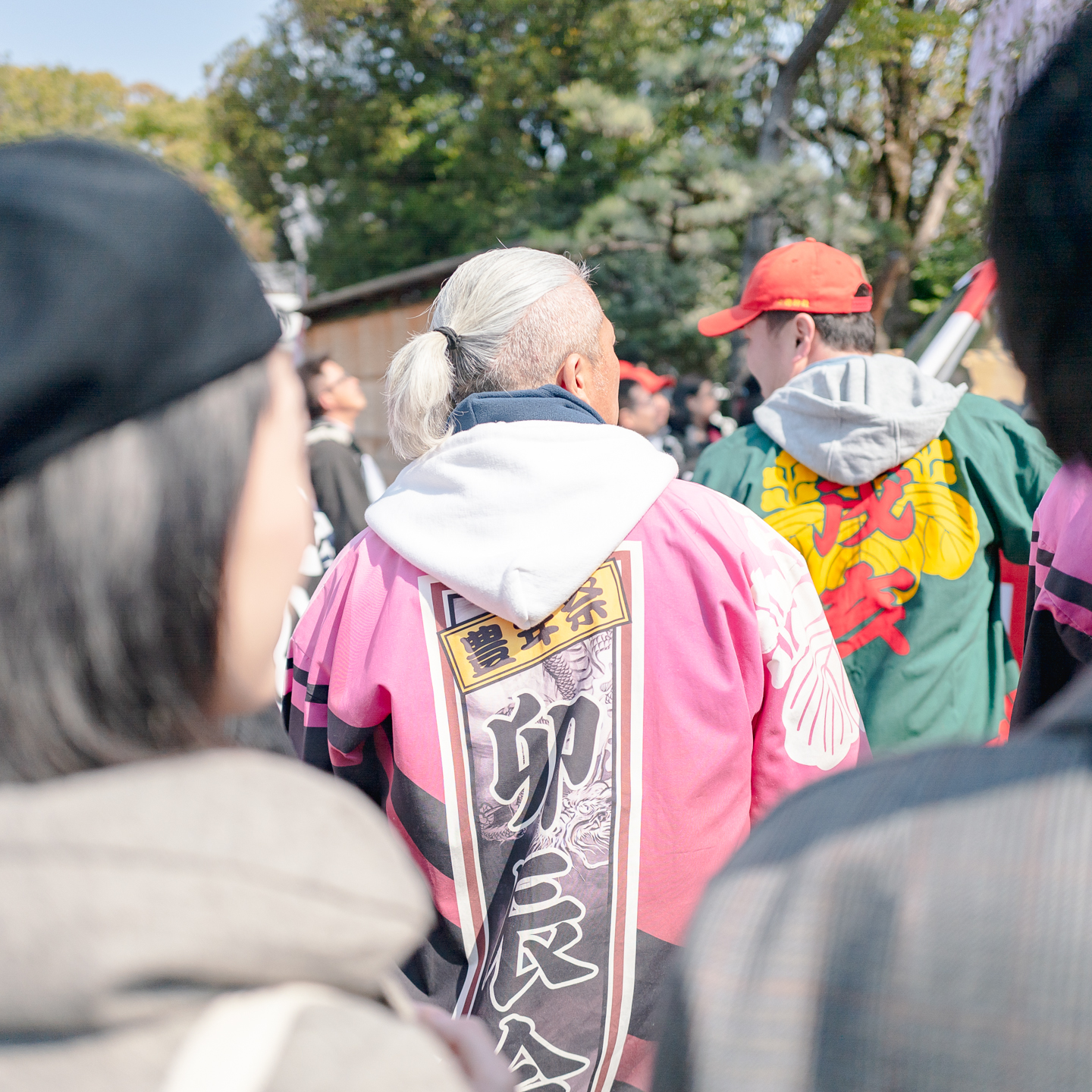 Leica Q · f/1.8 · 1/16000 · ISO
100
Leica Q · f/1.8 · 1/16000 · ISO
100
The main festivities, however, don’t start until later in the day. About a ten minute walk from the Tagata Shrine in the Kumano Shrine, banners, and mikoshi (神輿 ) religious palanquins are set out in preparation.
 Leica Q · f/16 · 1/60 · ISO
500
Leica Q · f/16 · 1/60 · ISO
500
Then, at 2pm, the main procession begins moving from the Kumano Shrine to the Tagata Shrine.
 Leica Q · f/16 · 1/125 · ISO
100
Leica Q · f/16 · 1/125 · ISO
100
Priests salt the road the purify the path that the palanquin bearers before them will take.
 Leica Q · f/3.2 · 1/800 · ISO
100
Leica Q · f/3.2 · 1/800 · ISO
100
Many of the participants in the procession wear traditional costumes, like this elaborate Tengu costume.
 Leica Q · f/14 · 1/80 · ISO
100
Leica Q · f/14 · 1/80 · ISO
100
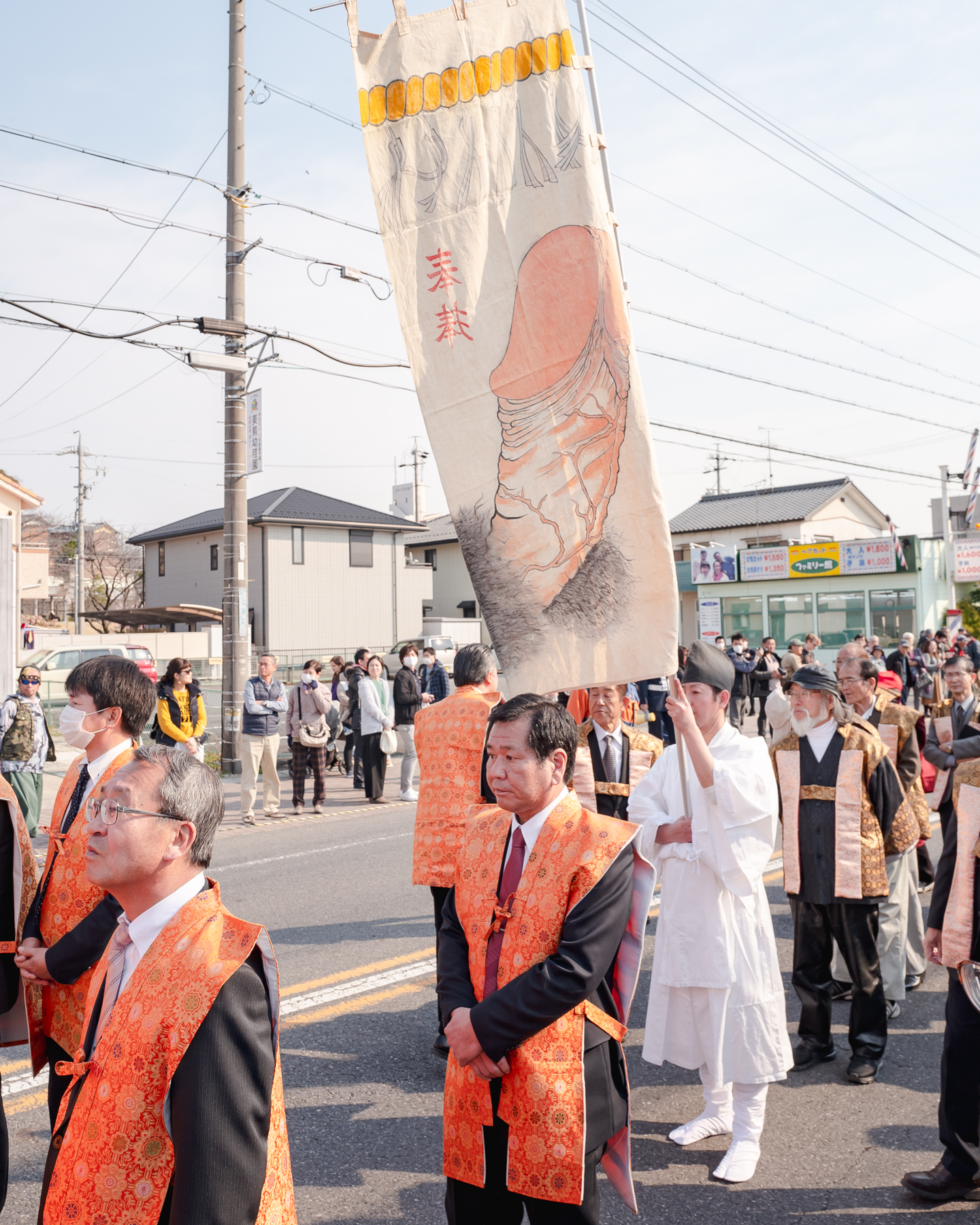 Leica Q · f/8 · 1/320 · ISO
100
Leica Q · f/8 · 1/320 · ISO
100
 Leica Q · f/4.5 · 1/800 · ISO
100
Leica Q · f/4.5 · 1/800 · ISO
100
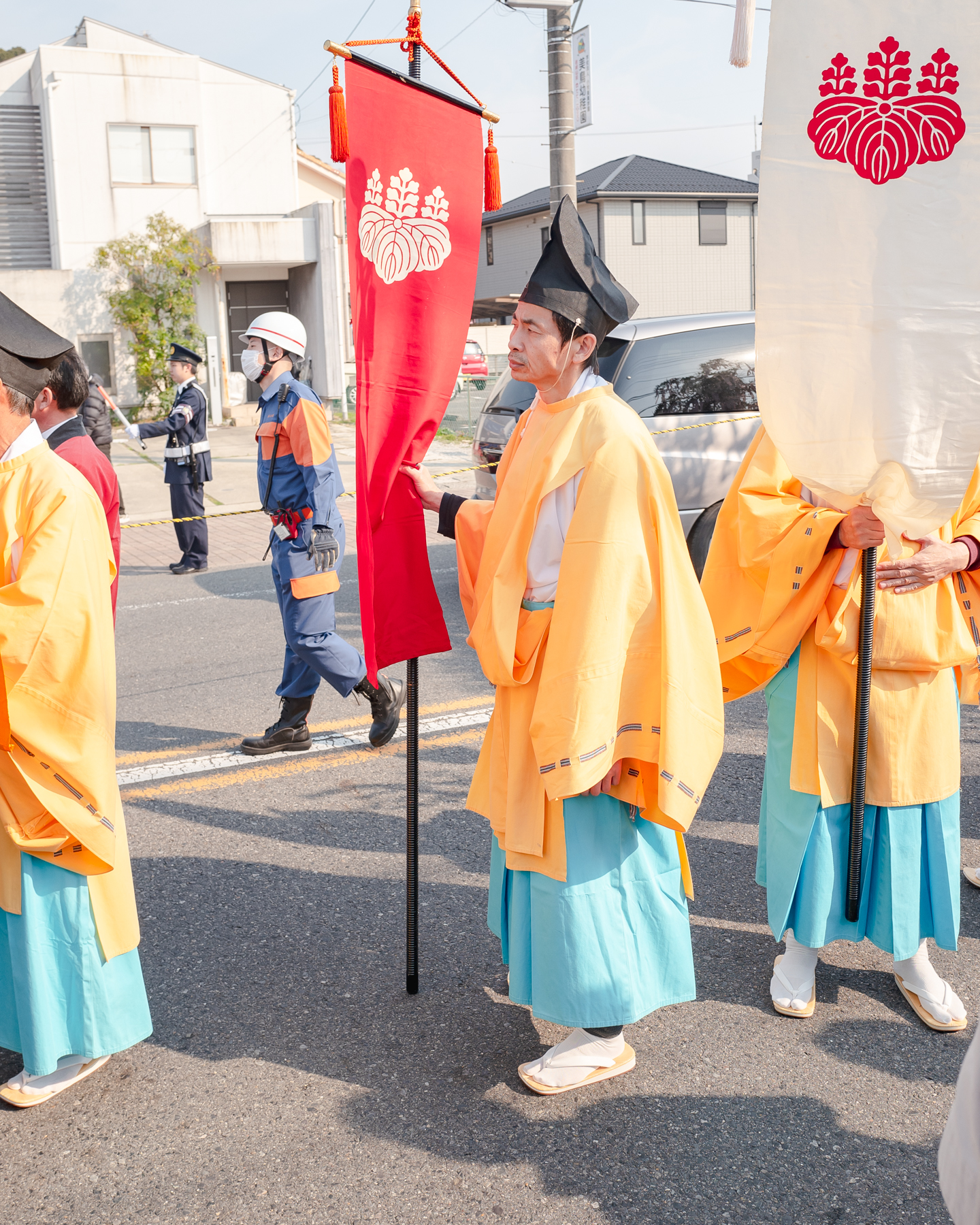 Leica Q · f/5.6 · 1/640 · ISO
100
Leica Q · f/5.6 · 1/640 · ISO
100
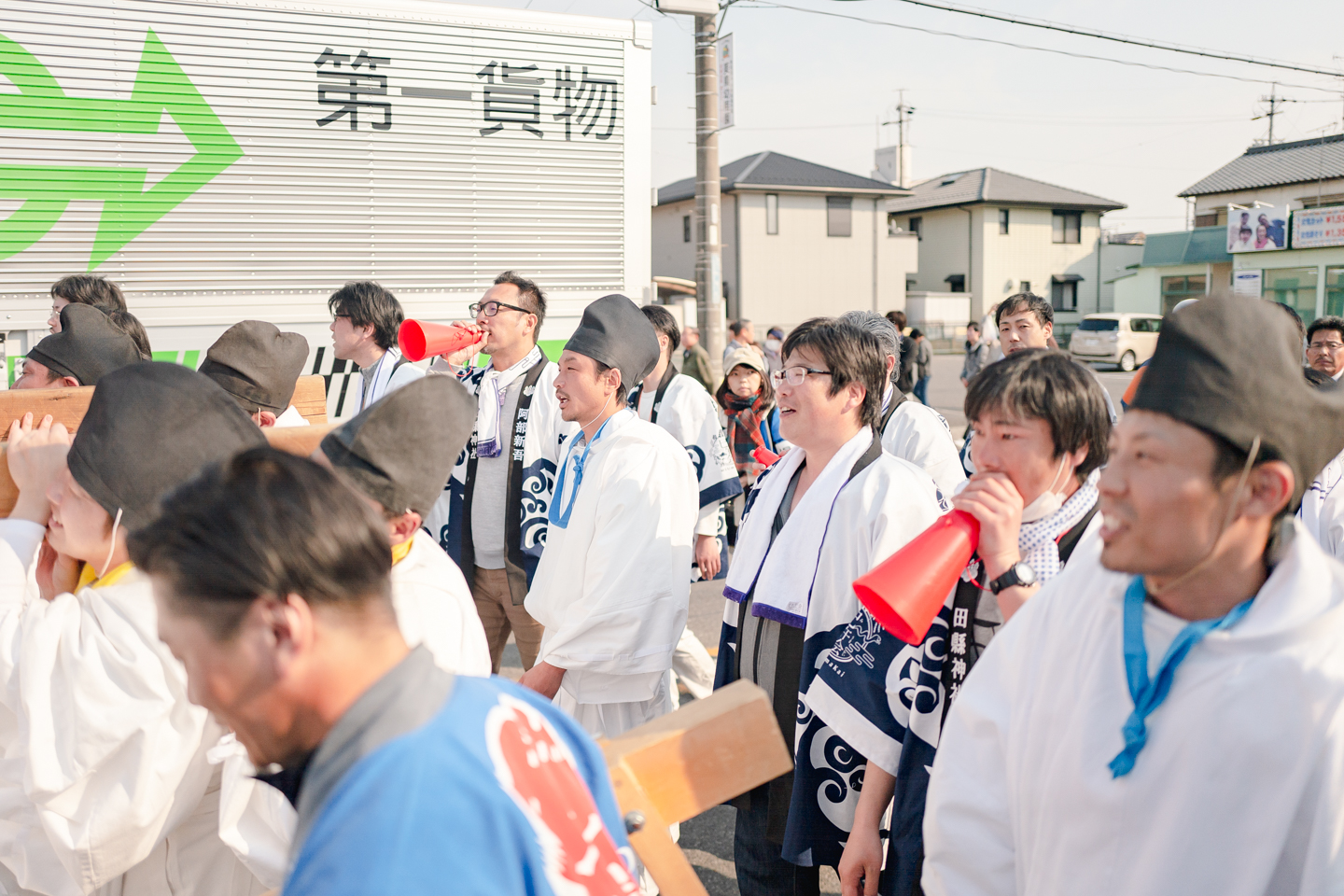 Leica Q · f/1.7 · 1/16000 · ISO
100
Leica Q · f/1.7 · 1/16000 · ISO
100
The star of the procession is the giant wooden phallus carried in its own mikoshi. The mikoshi is carried by groups of 42-year old men. It’s thought that 42 is an unlucky age and that carrying the giant phallus in the procession will ward off bad luck.
 Leica Q · f/1.7 · 1/8000 · ISO
100
Leica Q · f/1.7 · 1/8000 · ISO
100
Each year, a slightly larger new wooden phallus is carved from a cypress trunk. They are nearly 3 meters long each and weigh more than 250 kilograms. Carrying the palanquin looked like hard work, especially considering that they stop every 5 minutes or so and spin the whole structure very briskly in place.
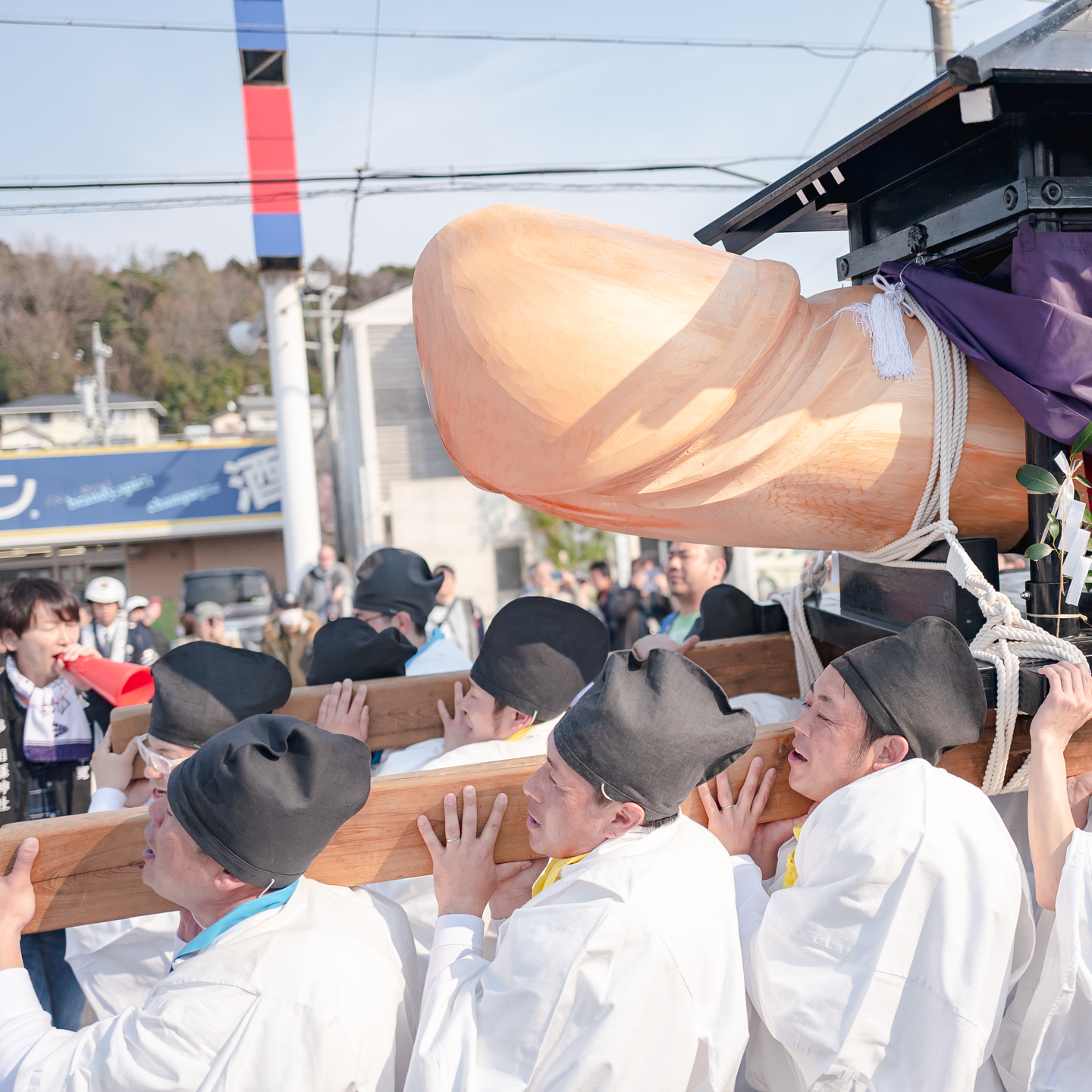 Leica Q · f/1.7 · 1/10000 · ISO
100
Leica Q · f/1.7 · 1/10000 · ISO
100
Once the giant phallus arrives in the shrine, it is spun a few more times as a large group of visitors watch on. Then it is taken inside the shrine to compare with last year’s.
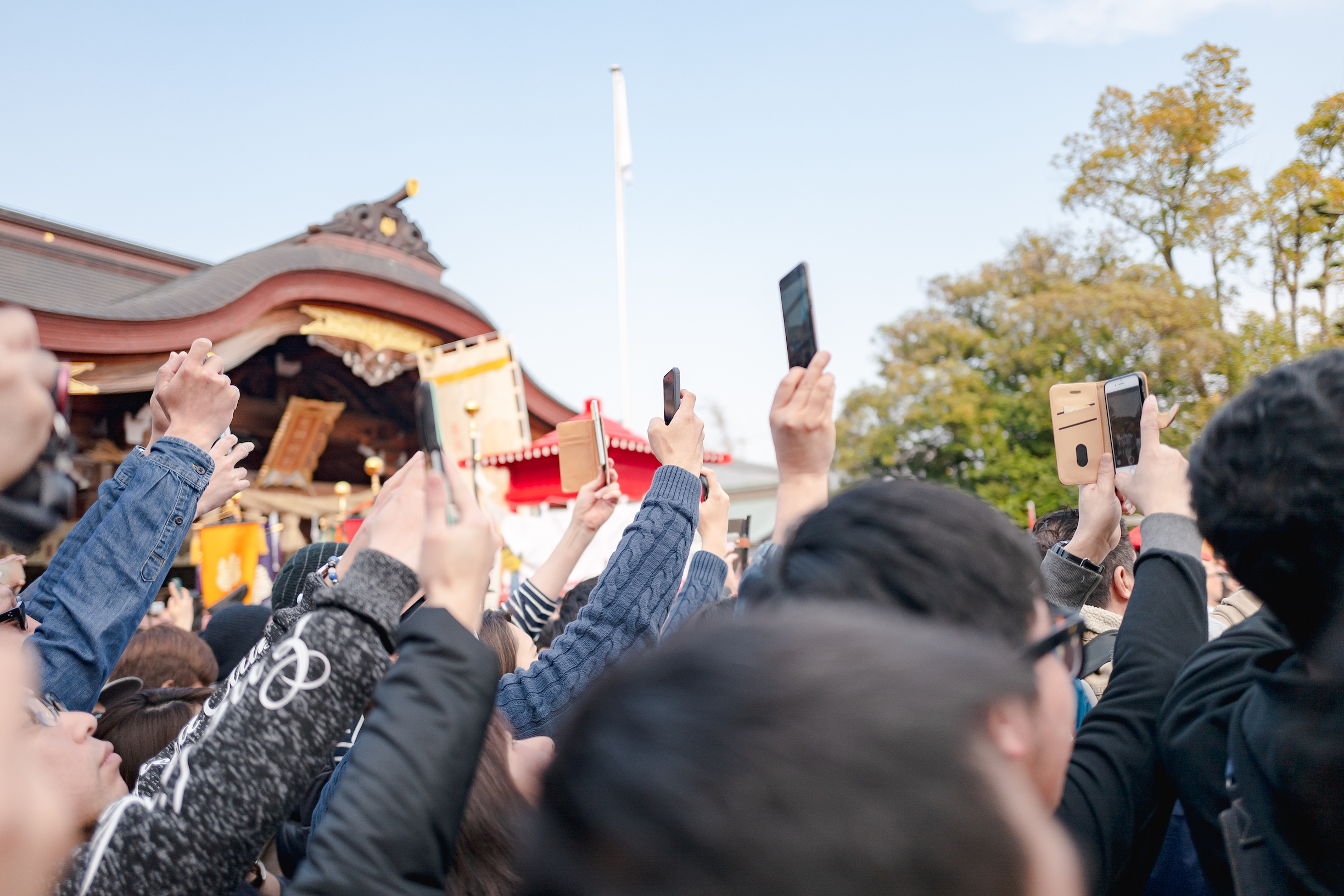
 Leica Q · f/16 · 1/80 · ISO
100
Leica Q · f/16 · 1/80 · ISO
100
Around 3:30pm, a crowd starts to gather in an open square at the base of a raised platform for the final event of the day. An announcer warns all children, eyeglass wearers, and the elderly to leave the area because of the physical danger of the next ceremony. The elderly around us ignored the instructions and stayed. A line of public safety officers donning helmets lined the platform to keep us at a safe distance from the platform.
You see, the final ceremony of the day is Mochinage. It’s a tradition that used to be quite prevalent in Japan to commemorate religious holidays and even the construction of new houses. During mochinage, people throw mochi from either a raised platform or the second floor of a building at neighbors or visitors below. Mind you, these aren’t the soft, colorful mochi that many of you may be picturing. They’re instead hard and feel about as dense as baseballs.
At Honen Matsuri, local dignitaries line up behind barrels of mochi that were brought to the shrine in the procession earlier in the day. As a priest thanks everyone for coming and makes a prayer over the loudspeaker, the dignitaries start grabbing handfuls of mochi. Then, when the priest gives the cue to start, the chaos begins.

Mochi starts raining down on our heads while everyone frantically tries to reach for them. Being used to orderly crowds in Japan, it was pretty surprising how violent it got at times with people getting pushed and falling to the ground.
There is a short break to allow everyone to gather themselves before another wave of mochi throwing.
Fortunately for me, I am quite a bit taller than the average Japanese person and have long arms as well. I was able to grab three by the end of the roughly 15 minutes it took for the mochi to run out.
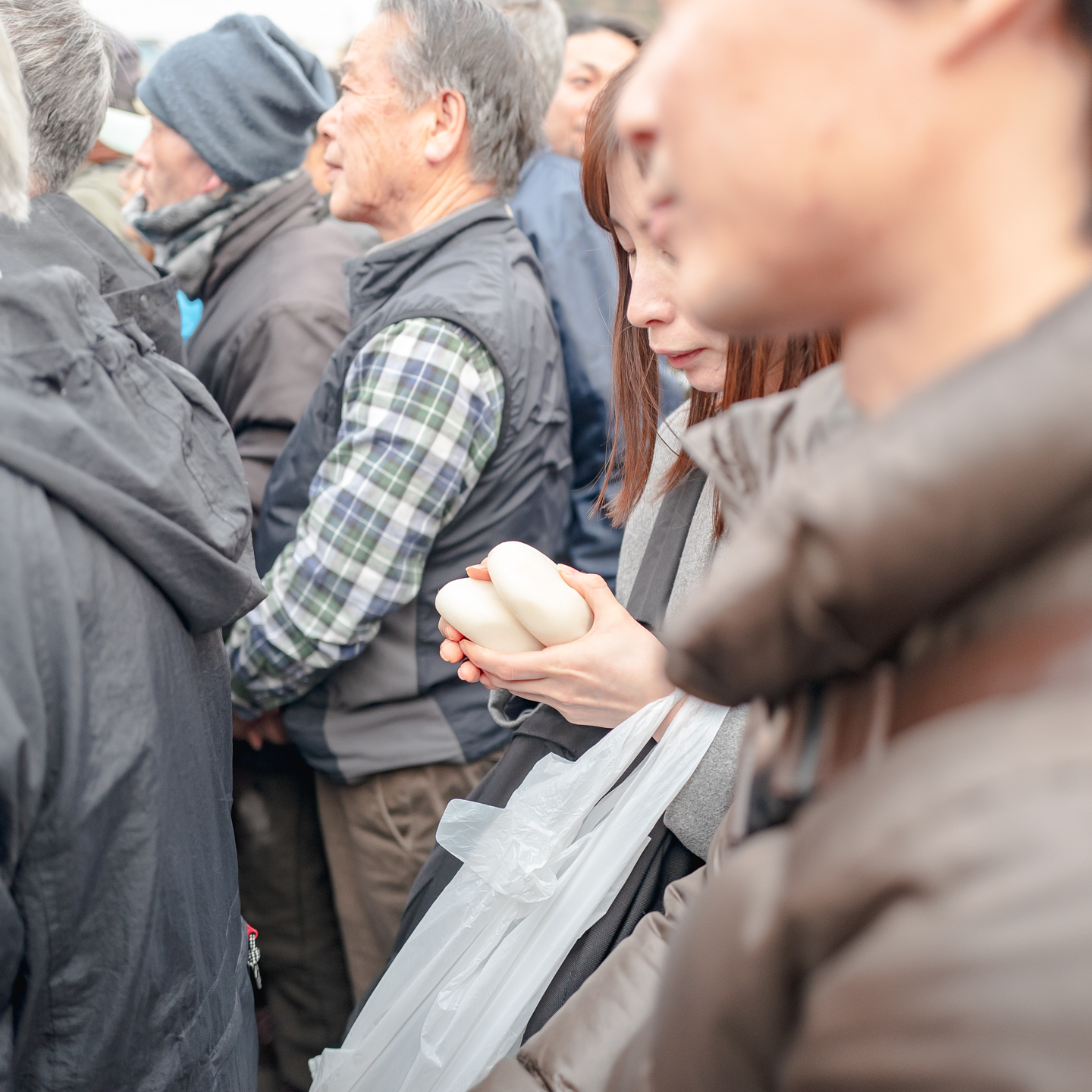 Leica Q · f/1.7 · 1/2000 · ISO
250
Leica Q · f/1.7 · 1/2000 · ISO
250
As the festival wound down, we saw attendees, both visitors and locals alike, proudly sharing the mochi they had caught. I noticed that most people in my generation or younger were satisfied with catching just one or two.
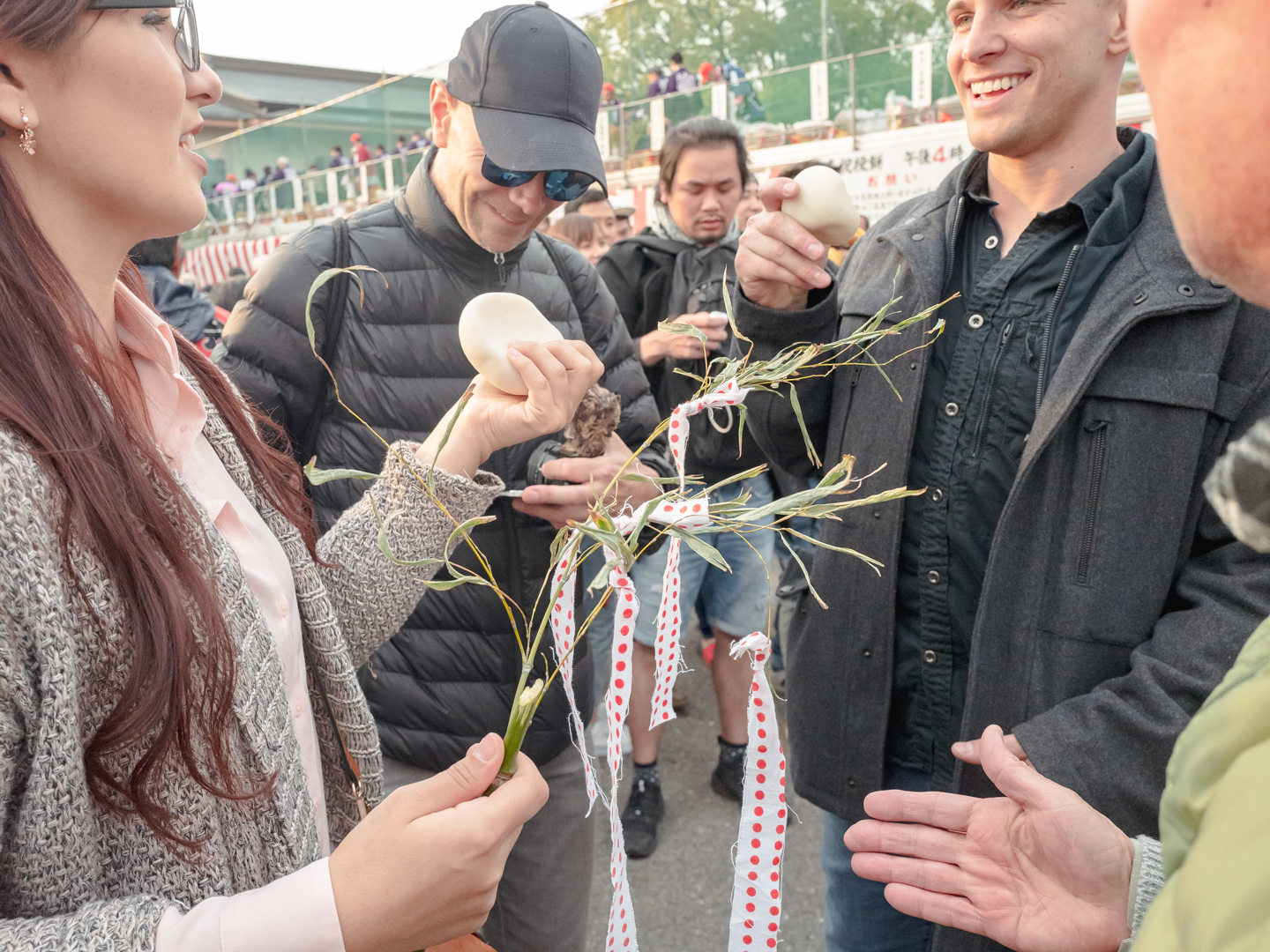 Leica Q · f/7.1 · 1/2000 · ISO
2500
Leica Q · f/7.1 · 1/2000 · ISO
2500
The elderly, however, were clearly playing a different game and collected far more. I even saw some of them diving to catch mochi that had fallen on the ground. The man below coolly walked away with more than a dozen.
 Leica Q · f/7.1 · 1/2000 · ISO
1600
Leica Q · f/7.1 · 1/2000 · ISO
1600
Thanks to Q for reading drafts of this.
Emoji in the feature image are from the original DoCoMo emoji set. Credit to Monica Dinculescu for turning them into a font.
